Look. You’re either a person who doesn’t mind a lot of wiring or you’re a person who wants to hide every wire you can. There isn’t much of a middle ground. If you’re trying to get TV into a spare room, you will have to make a choice as to how much wiring you really want. I went the extra mile to see if it was possible to eliminate practically all wiring in a spare room. And, I’m here to tell you all about it.
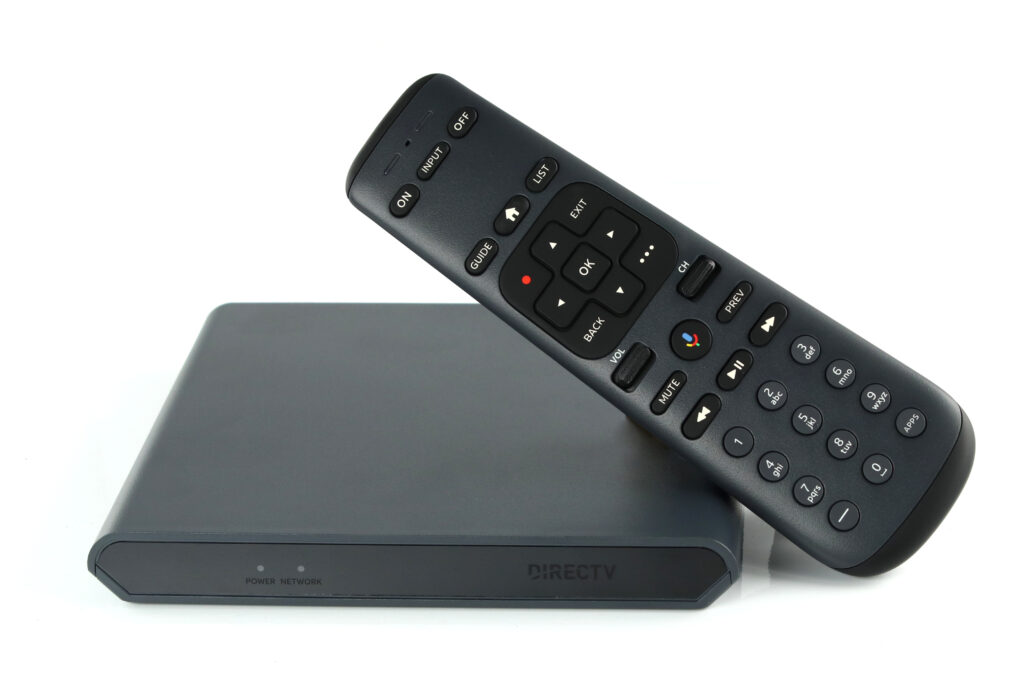
If you have something like DIRECTV’s Gemini satellite client, you’ll be able to use a wireless connection between your Genie and the Gemini. But, once the connection gets to the Gemini, there are still wires. There’s the power cable to the wall, and the HDMI cable to the TV. If you’re good at in-wall wiring you can hide these, but they’re still there. Nothing you can do about it. In fact, over a decade ago a cable company actually got in big trouble for saying their wireless cable box “eliminated wires” because it didn’t.
If you want a truly wireless solution you’ll have to do more.
Luckily, I had access to a lot of parts from previous projects. The stuff I used would end up costing you thousands of dollars, but I didn’t want to worry about cost. I wanted to know if it was even possible at all.
I started with a DIRECTV Gemini which was in one of the other bedrooms. I was able to connect it with a wired connection there and hide it inside a well-ventilated cabinet. This took care of getting the signal in the first place, and with the Gemini’s Bluetooth remote I figured I’d be able to control it from anywhere within 50 feet.
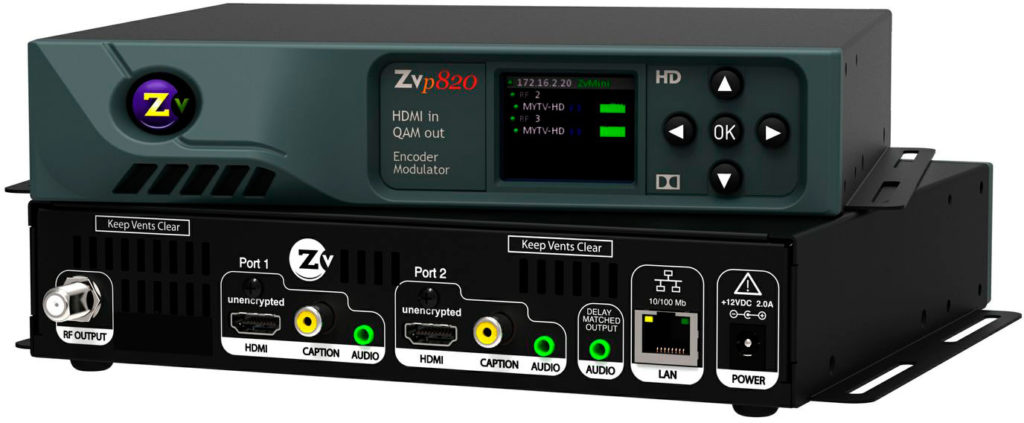
I had access to a modulator like this ZeeVee model you see above. It takes unencrypted HDMI input and outputs an RF-modulated signal. This is essentially the same kind of idea that used to exist back in the 20th century where you could take the output of a VCR and put it on channel 3. The biggest difference is that it’s about 100 times the price. Why? I go into detail here, but just to give you the basics it has to do with licensing the tech that goes into one of these things. That stuff all used to be essentially free for anyone to use but now you have to pay a lot of royalties to use it.
I’m not going to show you a picture of this thing. If you search on the internet, you will find devices that will crack the built-in copy protection on an HDMI signal. They’re not terribly expensive. You’ll need one of these because if you connect the Gemini straight to the modulator it won’t work. The copy protection built into HDMI is specifically designed to stop you from doing it.
I got one of these boxes just so I could see how this would all work. We don’t sell them at Solid Signal and I’m not going to tell you which one I got or where. But I will say that it wasn’t hard to find.
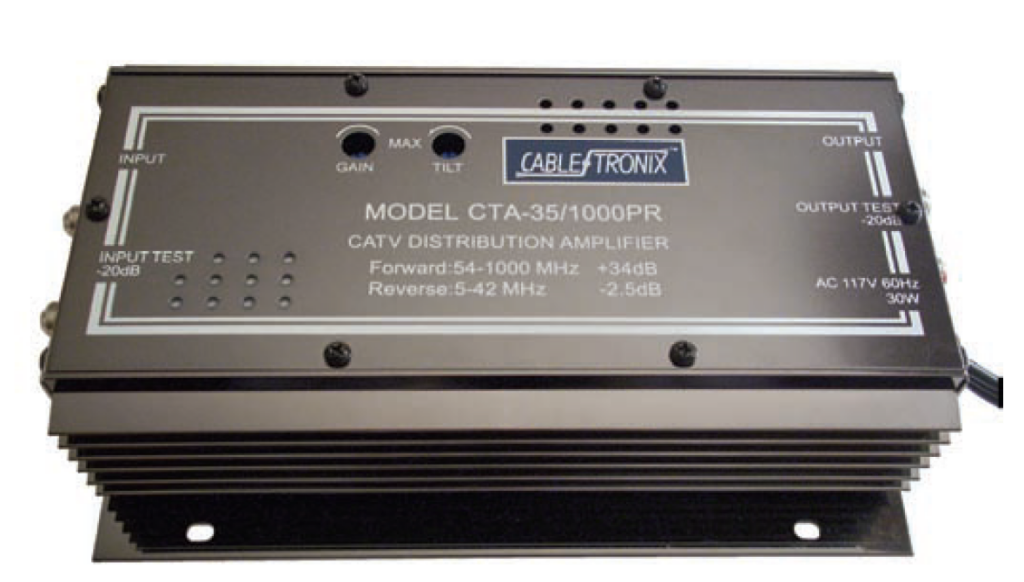
In order to broadcast a TV signal, you’ll need to amplify it. I didn’t have access to a 50,000 watt amplifier, which is what’s usually used for TV stations. Not only would that be insanely expensive, it would need a lot of licenses. But I did have a pretty powerful amplifier like the one you see above. It would take a signal out from the modulator and make it about 2,000 times more powerful. I’d need that because broadcast signals get very weak very quickly. There’s this thing called the rule of squares that explains it all, if you’re interested. What I do know is that I’d lose more than 80% of that signal in the short distance between the two rooms. So, I hooked this amplifier up to the modulator’s output. Then I took a monopole antenna like this one:
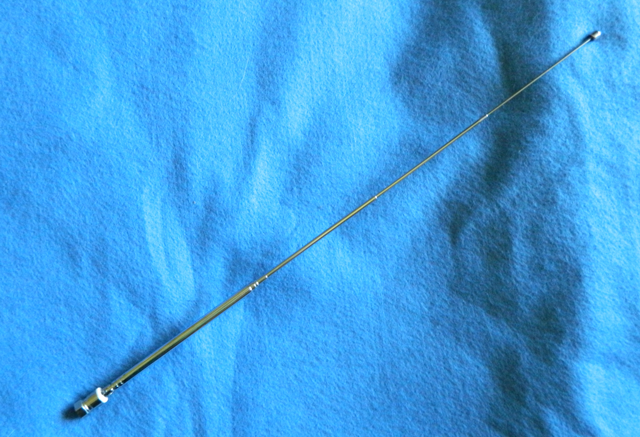
and I hooked up to the modulator’s output. That antenna came from an old portable TV, but if you want one you can find the parts you’ll need on several hobbyist sites. I don’t know of anyone who sells them pre-made.
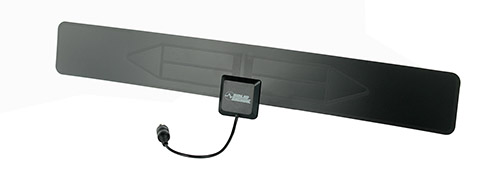
At the TV, I connected a small flat antenna like the HD-Blade you see above. I would have had better results with a much larger antenna but I wanted something that would blend into the background. This antenna can be painted to match the room so that’s about as close to invisible as you’re going to get.
I should point out that of course I still needed power to the TV. If I wanted “truly wireless” I could have rigged up a power bank to supply power to the TV but it wouldn’t have lasted very long. I think we’re all going to have to accept that even the most wireless setup is going to need to plug into the wall.
I then told my TV that I had cable television and told it to scan for channels. It found precisely one, the one that I had set on the modulator. No surprise.
Yes, it worked. Not great, but it worked. I tried to get some photos showing the picture quality but I couldn’t get anything that really showed it. The picture was sort of dark and snowy, but it was a TV picture and I could use the remote to change channels. So in that sense yes it did work.
But if I had not had all this equipment, I would have spent about $3,500 for a picture that didn’t look much better than an old tube television. Not to mention I still had to go to a skeevy web site to get the black box.
You bet I did. And to some degree I’m taking some risk admitting it here on the internet. But it was for a very short time and I don’t believe the broadcast signal got outside my house. So hopefully this will be looked at as a victimless crime and not something I’m inclined to do.
Legally, you as a private person are only able to broadcast on certain frequencies. For example, you can use the frequencies used for cell phones, for Bluetooth, and for Wi-Fi. However, it’s strictly against the law to broadcast in the range used for television channels. In order to try to stay on the right side of the law, I set the modulator to QAM channel 90 which is actually in the range of consumer 5G devices. It was still pretty much illegal to do it but at least I figured I could make a good attempt to stay within the law.
The bottom line here is that it’s really not effective to broadcast television within your home. You can use long HDMI cables or use unused cable company wire that might be in your home with this pair of devices. You can also choose a smart TV which will let you connect using your DIRECTV account and watch programming that way. Or, you can simply accept that something like a Gemini is a pretty good option. It’s thin enough to mount behind a TV so the only thing you’ll see is the second power cord.
I would say, don’t do what I did because it’s a waste of time and money. Instead, get what you need from SolidSignal.com. If you have any questions, call us at 888-233-7563. If it’s after hours, fill out the form below and we’ll get right back to you!
The post Can you broadcast a TV signal to a TV inside your house? I tried it appeared first on The Solid Signal Blog.
Continue reading...
Problem 1: Wireless isn’t really wireless

If you have something like DIRECTV’s Gemini satellite client, you’ll be able to use a wireless connection between your Genie and the Gemini. But, once the connection gets to the Gemini, there are still wires. There’s the power cable to the wall, and the HDMI cable to the TV. If you’re good at in-wall wiring you can hide these, but they’re still there. Nothing you can do about it. In fact, over a decade ago a cable company actually got in big trouble for saying their wireless cable box “eliminated wires” because it didn’t.
If you want a truly wireless solution you’ll have to do more.
Here’s what I tried
Luckily, I had access to a lot of parts from previous projects. The stuff I used would end up costing you thousands of dollars, but I didn’t want to worry about cost. I wanted to know if it was even possible at all.
Part 1: DIRECTV client
I started with a DIRECTV Gemini which was in one of the other bedrooms. I was able to connect it with a wired connection there and hide it inside a well-ventilated cabinet. This took care of getting the signal in the first place, and with the Gemini’s Bluetooth remote I figured I’d be able to control it from anywhere within 50 feet.
Part 2: Modulator

I had access to a modulator like this ZeeVee model you see above. It takes unencrypted HDMI input and outputs an RF-modulated signal. This is essentially the same kind of idea that used to exist back in the 20th century where you could take the output of a VCR and put it on channel 3. The biggest difference is that it’s about 100 times the price. Why? I go into detail here, but just to give you the basics it has to do with licensing the tech that goes into one of these things. That stuff all used to be essentially free for anyone to use but now you have to pay a lot of royalties to use it.
Part 2a: Black box
I’m not going to show you a picture of this thing. If you search on the internet, you will find devices that will crack the built-in copy protection on an HDMI signal. They’re not terribly expensive. You’ll need one of these because if you connect the Gemini straight to the modulator it won’t work. The copy protection built into HDMI is specifically designed to stop you from doing it.
I got one of these boxes just so I could see how this would all work. We don’t sell them at Solid Signal and I’m not going to tell you which one I got or where. But I will say that it wasn’t hard to find.
Part 3: Amplifier

In order to broadcast a TV signal, you’ll need to amplify it. I didn’t have access to a 50,000 watt amplifier, which is what’s usually used for TV stations. Not only would that be insanely expensive, it would need a lot of licenses. But I did have a pretty powerful amplifier like the one you see above. It would take a signal out from the modulator and make it about 2,000 times more powerful. I’d need that because broadcast signals get very weak very quickly. There’s this thing called the rule of squares that explains it all, if you’re interested. What I do know is that I’d lose more than 80% of that signal in the short distance between the two rooms. So, I hooked this amplifier up to the modulator’s output. Then I took a monopole antenna like this one:

and I hooked up to the modulator’s output. That antenna came from an old portable TV, but if you want one you can find the parts you’ll need on several hobbyist sites. I don’t know of anyone who sells them pre-made.
At the TV

At the TV, I connected a small flat antenna like the HD-Blade you see above. I would have had better results with a much larger antenna but I wanted something that would blend into the background. This antenna can be painted to match the room so that’s about as close to invisible as you’re going to get.
I should point out that of course I still needed power to the TV. If I wanted “truly wireless” I could have rigged up a power bank to supply power to the TV but it wouldn’t have lasted very long. I think we’re all going to have to accept that even the most wireless setup is going to need to plug into the wall.
I then told my TV that I had cable television and told it to scan for channels. It found precisely one, the one that I had set on the modulator. No surprise.
So did it work?
Yes, it worked. Not great, but it worked. I tried to get some photos showing the picture quality but I couldn’t get anything that really showed it. The picture was sort of dark and snowy, but it was a TV picture and I could use the remote to change channels. So in that sense yes it did work.
But if I had not had all this equipment, I would have spent about $3,500 for a picture that didn’t look much better than an old tube television. Not to mention I still had to go to a skeevy web site to get the black box.
Did I break the law?
You bet I did. And to some degree I’m taking some risk admitting it here on the internet. But it was for a very short time and I don’t believe the broadcast signal got outside my house. So hopefully this will be looked at as a victimless crime and not something I’m inclined to do.
Legally, you as a private person are only able to broadcast on certain frequencies. For example, you can use the frequencies used for cell phones, for Bluetooth, and for Wi-Fi. However, it’s strictly against the law to broadcast in the range used for television channels. In order to try to stay on the right side of the law, I set the modulator to QAM channel 90 which is actually in the range of consumer 5G devices. It was still pretty much illegal to do it but at least I figured I could make a good attempt to stay within the law.
The bottom line
The bottom line here is that it’s really not effective to broadcast television within your home. You can use long HDMI cables or use unused cable company wire that might be in your home with this pair of devices. You can also choose a smart TV which will let you connect using your DIRECTV account and watch programming that way. Or, you can simply accept that something like a Gemini is a pretty good option. It’s thin enough to mount behind a TV so the only thing you’ll see is the second power cord.
I would say, don’t do what I did because it’s a waste of time and money. Instead, get what you need from SolidSignal.com. If you have any questions, call us at 888-233-7563. If it’s after hours, fill out the form below and we’ll get right back to you!
The post Can you broadcast a TV signal to a TV inside your house? I tried it appeared first on The Solid Signal Blog.
Continue reading...

